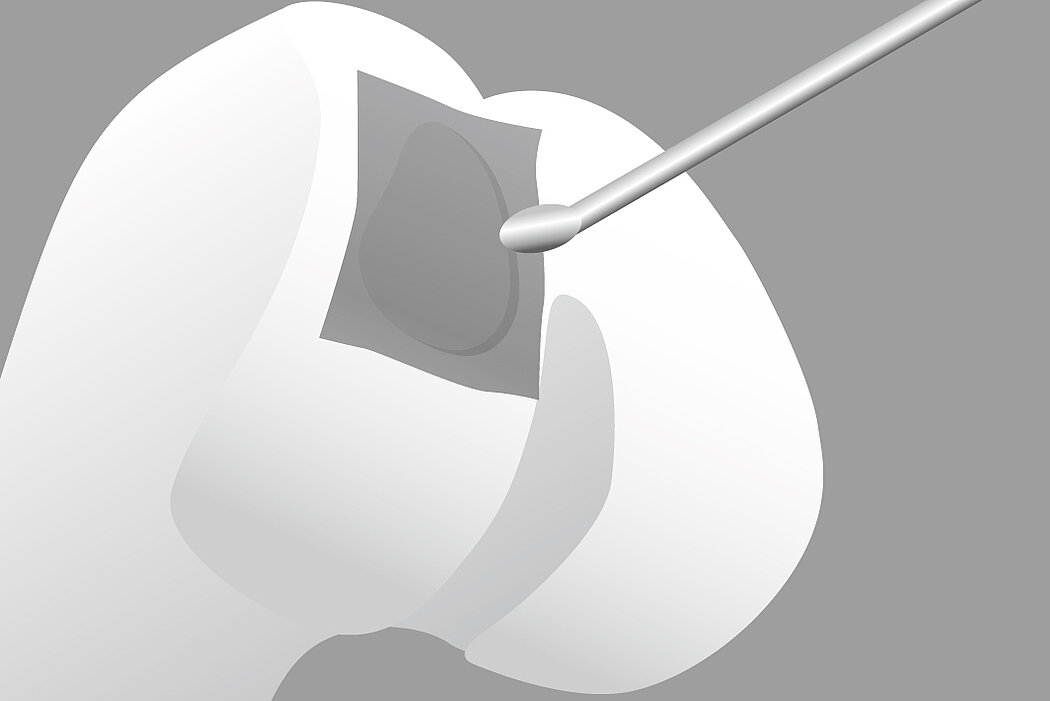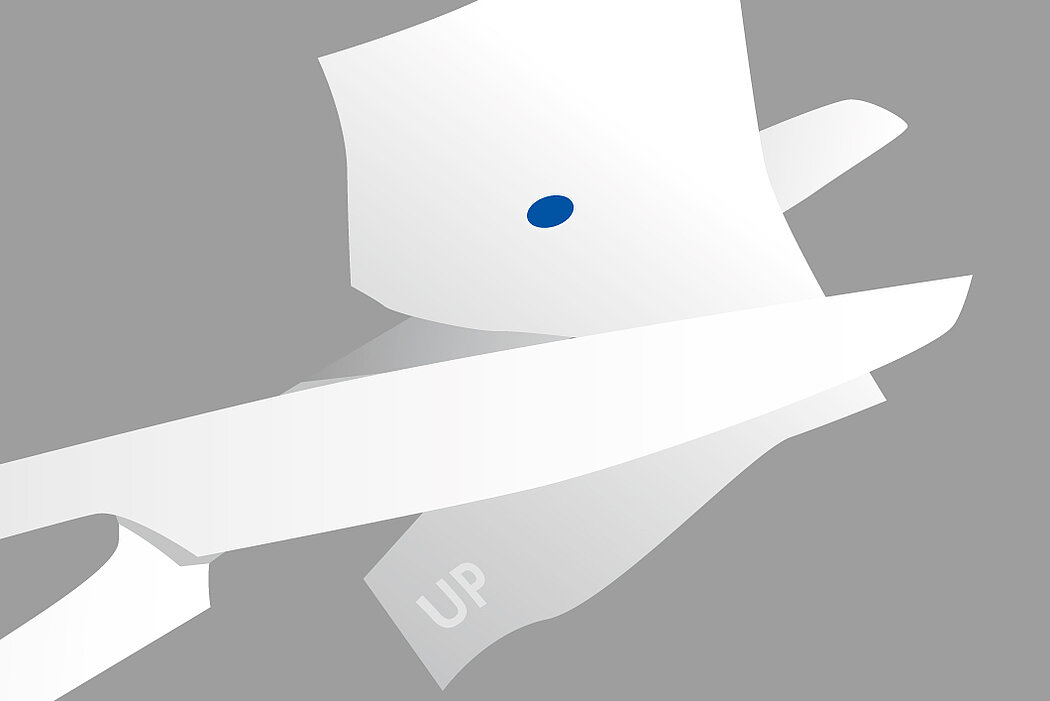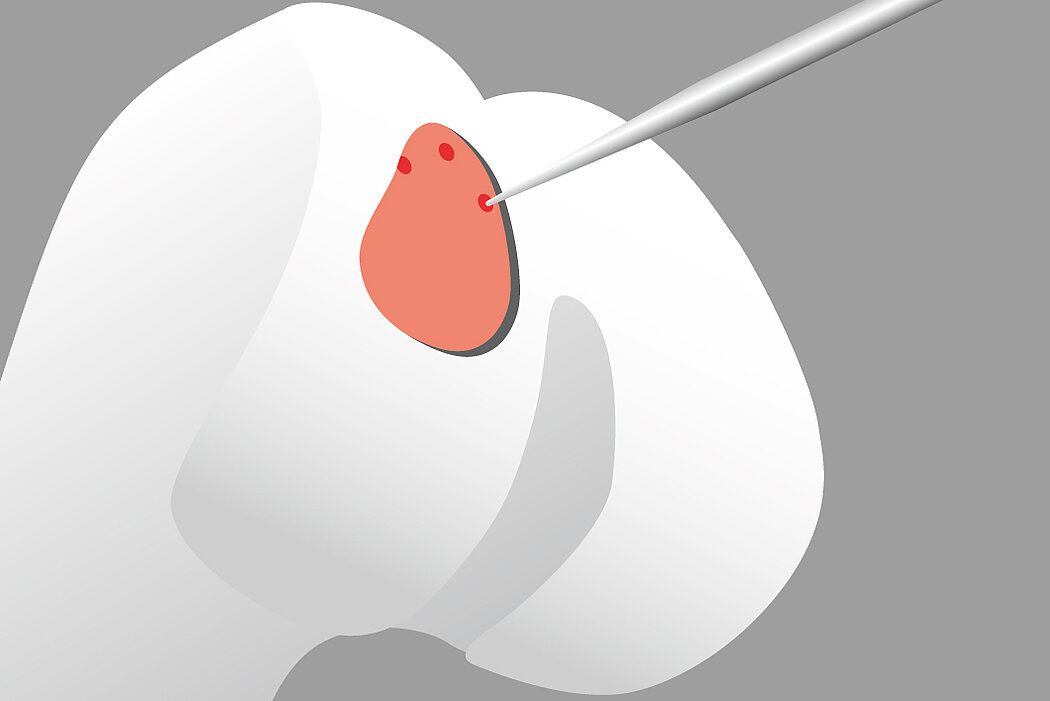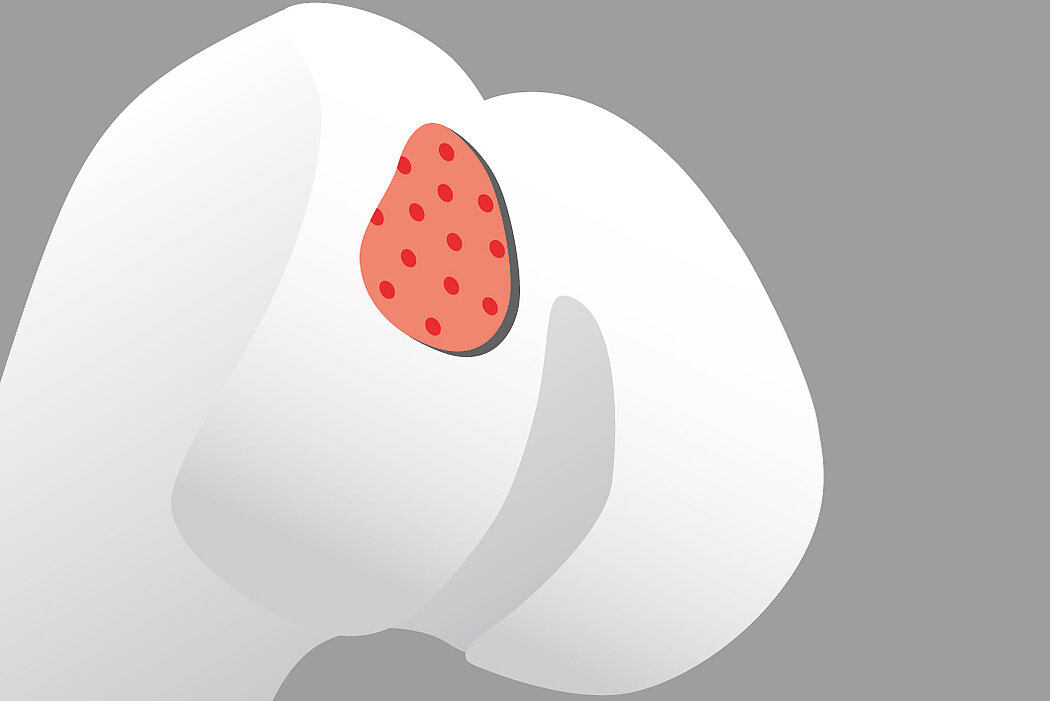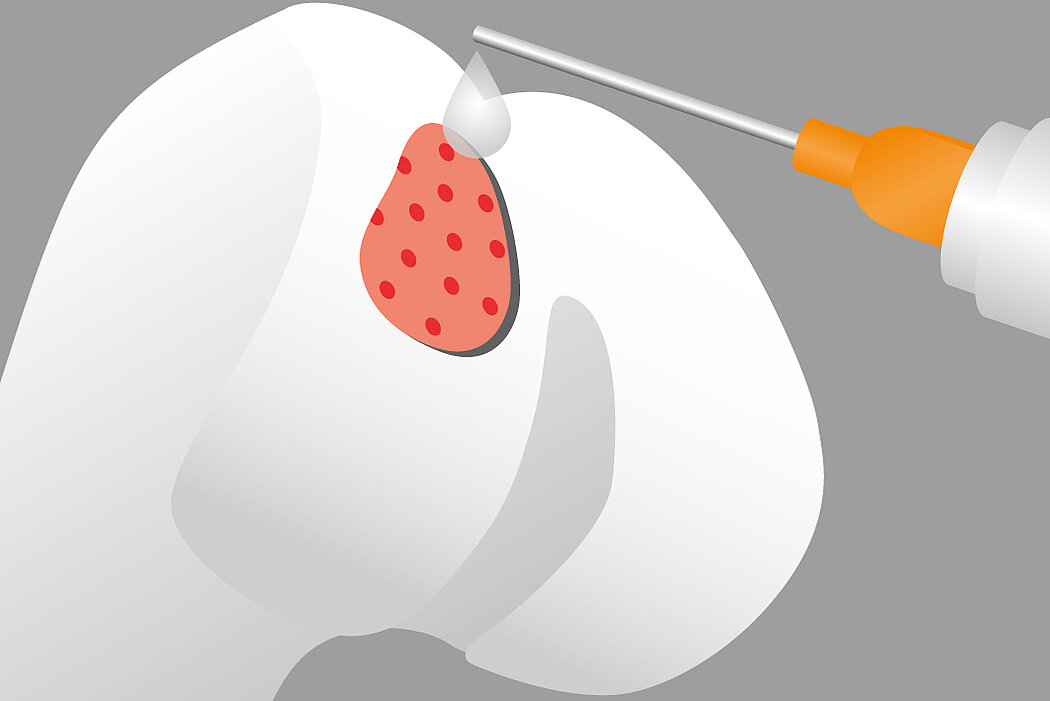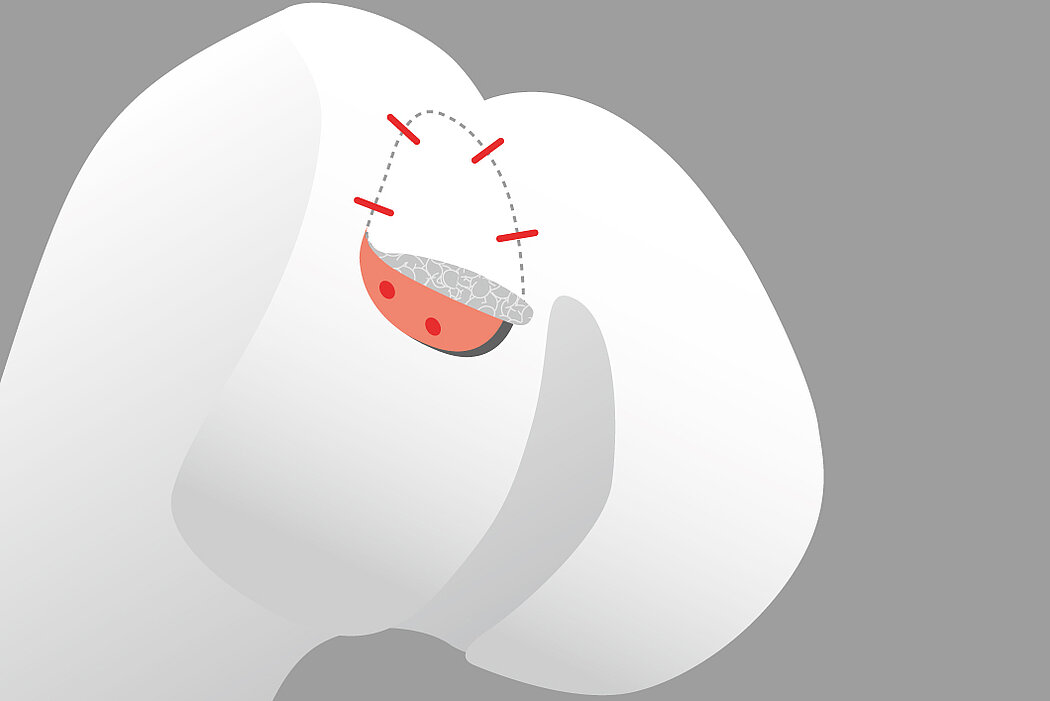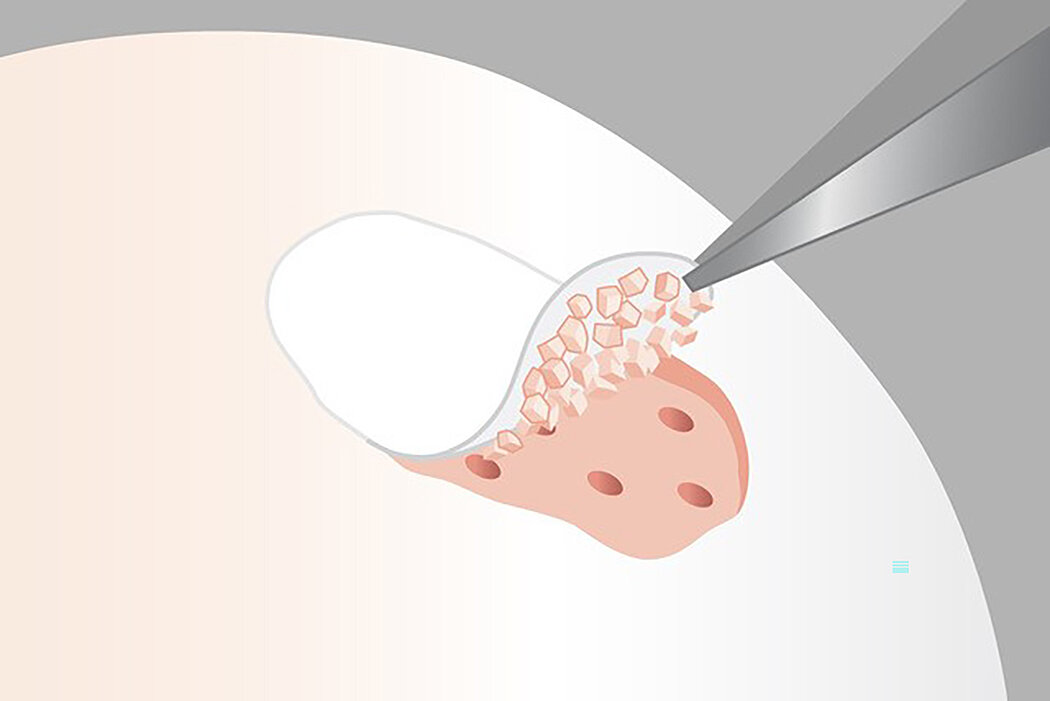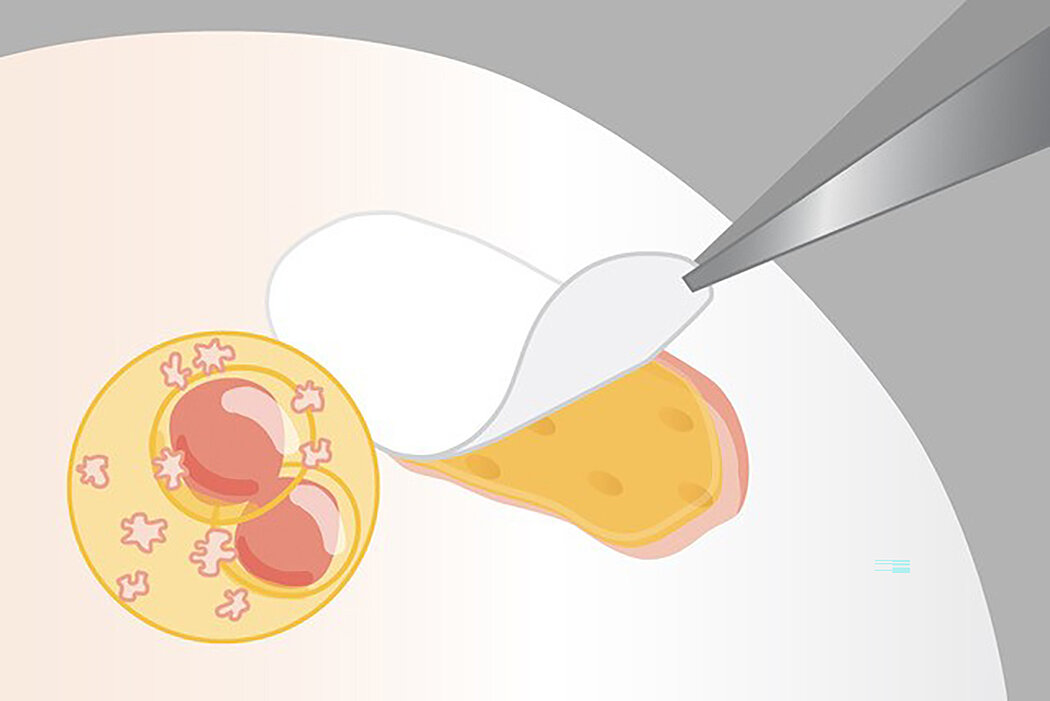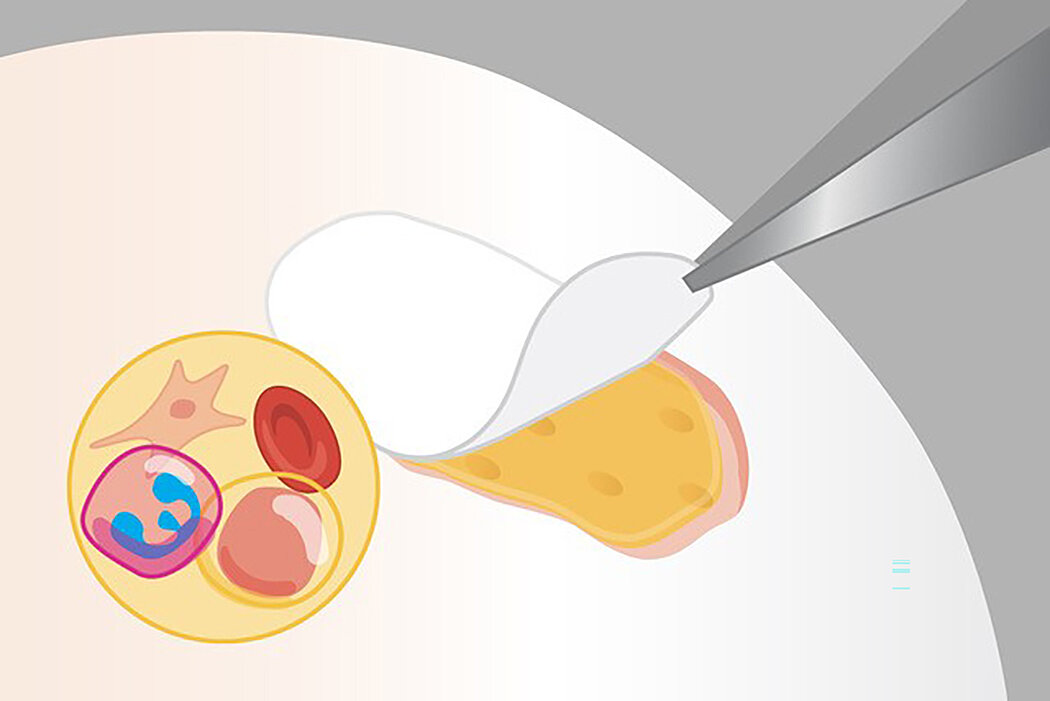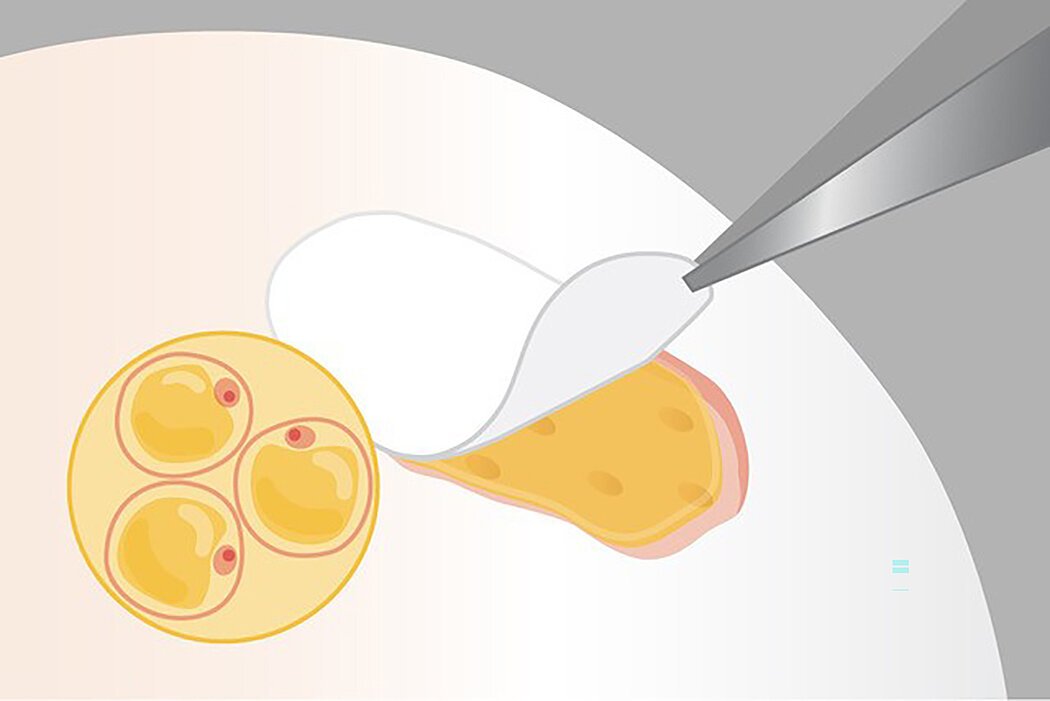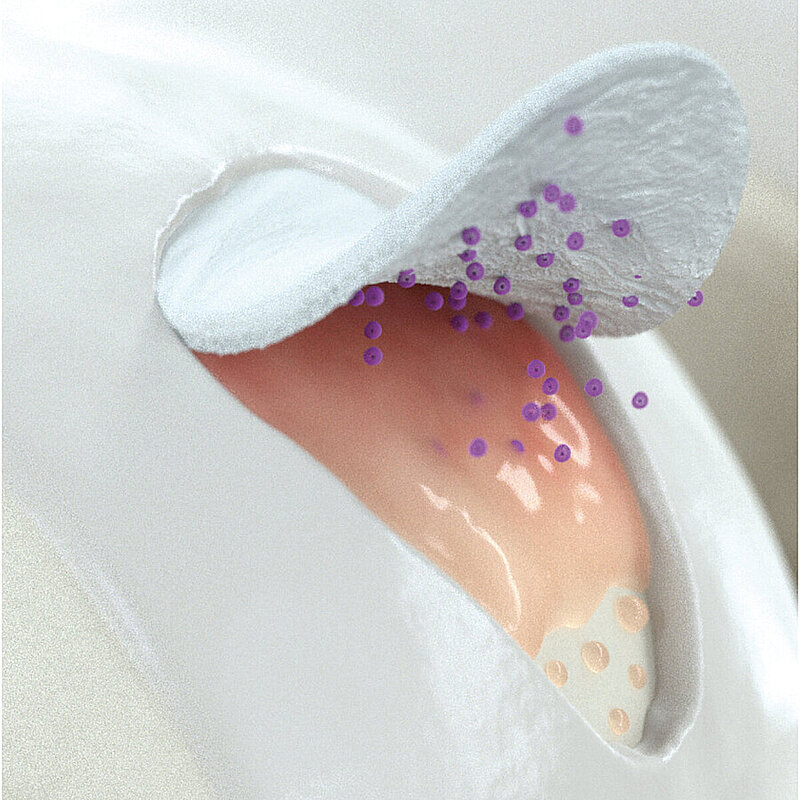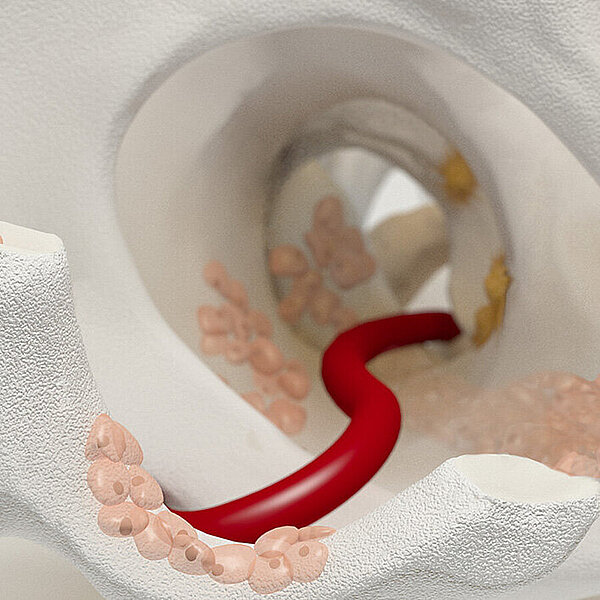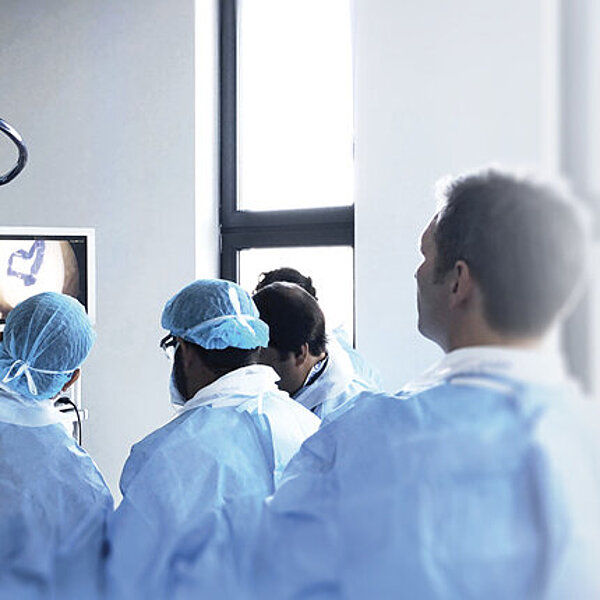AMIC® Chondro-Gide®
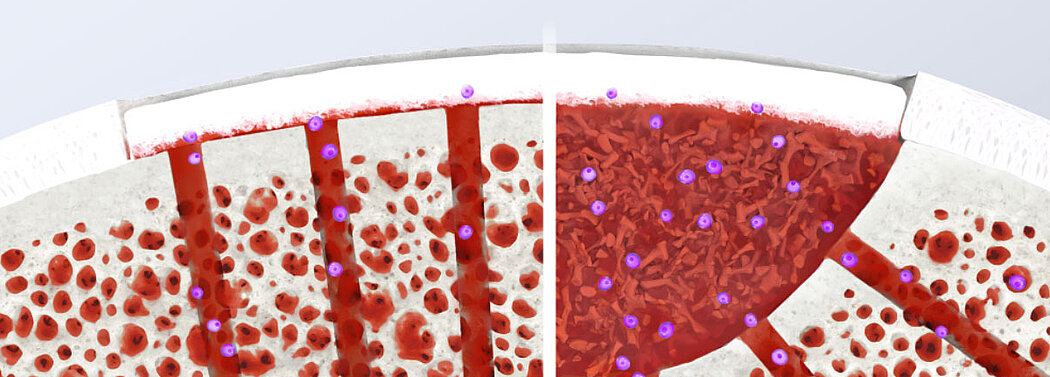
AMIC® Chondro-Gide® is a minimally-invasive 1-step procedure that can be performed either by mini-open surgery, or in an arthroscopic manner. Developed by Geistlich Surgery in collaboration with leading surgeons in Europe, this technique has been effective in repairing chondral or osteochondral defects in the knee, talus, and hip.1,2,3
The Benefits of Using AMIC® Chondro-Gide®
With both mini-open and arthroscopic techniques, the unique advantage of AMIC® Chondro-Gide® is that it supports the body’s own potential to heal itself. Damaged cartilage is removed, and then bone marrow stimulation (BMS) techniques are used to bring regeneration supporting cells to the defect site.
The membrane covers the defect and serves as a protective shield that contains the cells and minimizes the impact of shear forces on the delicate superclot. At the same time, it functions as the roof of a biological chamber that forms over the defect. The biocompatible collagen material provides an environment for cell growth and is replaced by new cartilage tissue over time.4
References
- VOLZ, M., et al. A randomized controlled trial demonstrating sustained benefit of Autologous Matrix-Induced Chondrogenesis over microfracture at five years. Int Orthop, Apr 2017, 41(4), 797-804) (Clinical study)
- JANELLI, E, et al. Arthroscopic treatment of chondral defects (Clinical study); in the hip: AMIC®, MACI, microfragmented adipose tissue transplantation (MATT) and other options. SICOT J, 2017, 3(43). (Clinical study)
- Geistlich Pharma AG data on file (Bench test)
- GILLE, J., et al. Cell-Laden and Cell-Free Matrix-Induced-Chondrogenesis versus Microfracture for the Treatment of Articular Cartilage Defects: A Histological and Biomechanical Study in Sheep. Cartilage OnlineFirst, January 7, 2010, doi:10.1177/1947603509358721 (Pre-clinical study)
- STEADMAN, J.R., Microfracture Technique for Full-Thickness Chondral Defects: Technique and Clinical Results. Operative Techniques in Orthopaedics. 1997. 7(4), 300-304. (Clinical study)
- STEINWACHS, M.R., et al. Matrix-associated chondroplasty: a novel platelet-rich plasma and concentrated nucleated bone marrow cell-enhanced cartilage restoration technique, Arthroscopy Techniques, 2014, (3) 2, pp e279-e282 (Clinical study)
- RICHTER, M., et al. Matrix-associated stem cell transplantation (MAST) in chondral lesions at the ankle as part of a complex surgical approach- 5-year-follow-up in 100 patients, Foot and Ankle Surgery, Volume 25, Issue 3, June 2019, Pages 264-271 (Clinical study)
- RICHTER, M. et al. Matrix-associated stem cell transplantation (MAST) versus autologous matrix induced chondrogenesis plus peripheral blood concentrate (AMIC+PBC) in chondral defects of the first metatarsophalangeal joint – A clinical cohort analysis." Fuß & Sprunggelenk, 2020, 18(3): 217-226. (Clinical study)
- DE GIROLAMO, L., et al., Autologous Matrix-Induced Chondrogenesis (AMIC) and AMIC Enhanced by Autologous Concentrated Bone Marrow Aspirate (BMAC) Allow for Stable Clinical and Functional Improvements at up to 9 Years Follow-Up: Results from a Randomized Controlled Study. Journal of Clinical Medicine. 2019. Vol. 8, no. 3, p. 392. (Clinical Study)
- GOBBI, A., et al. One-Step Cartilage Repair with Bone Marrow Aspirate Concentrated Cells and Collagen Matrix in Full-Thickness Knee Cartilage Lesions: Results at 2-Year Follow-up. Cartilage, 2011, 2(3): 286-299. (Clinical study)
- GOBBI, A., et al., One-step surgery with multipotent stem cells for the treatment of large full-thickness chondral defects of the knee. Am J Sports Med, 2011 42(3): 648-657. (clinical study)
- MASSEN, F.K., et al. One-Step Autologous Minced Cartilage Procedure for the Treatment of Knee Joint Chondral and Osteochondral Lesions: A Series of 27 Patients With 2-Year Follow-up. Orthop J Sports Med 2019 Jun 13;7(6) (Clinical study)
- SCIARETTA, F.V., One-Step Biological Resurfacing of Osteochondral Defects of the Patella, Novel Surgical Technique, Osteochondral Defects, Sphera Medical Journal, AlphaSigmaGroup, 2016
Developed to Support Regeneration: AMIC® Chondro-Gide®
References:
- VOLZ, M., et al. A randomized controlled trial demonstrating sustained benefit of Autologous Matrix-Induced Chondrogenesis over microfracture at five years. Int Orthop, Apr 2017, 41(4), 797-804) (Clinical study)
- JANELLI, E, et al. Arthroscopic treatment of chondral defects (Clinical study); in the hip: AMIC®, MACI, microfragmented adipose tissue transplantation (MATT) and other options. SICOT J, 2017, 3(43). (Clinical study)
- Geistlich Pharma AG data on file (Bench test)
- GILLE, J., et al. Cell-Laden and Cell-Free Matrix-Induced-Chondrogenesis versus Microfracture for the Treatment of Articular Cartilage Defects: A Histological and Biomechanical Study in Sheep. Cartilage OnlineFirst, January 7, 2010, doi:10.1177/1947603509358721 (Pre-clinical study)
- STEADMAN, J.R., Microfracture Technique for Full-Thickness Chondral Defects: Technique and Clinical Results. Operative Techniques in Orthopaedics. 1997. 7(4), 300-304. (Clinical study)
- STEINWACHS, M.R., et al. Matrix-associated chondroplasty: a novel platelet-rich plasma and concentrated nucleated bone marrow cell-enhanced cartilage restoration technique, Arthroscopy Techniques, 2014, (3) 2, pp e279-e282 (Clinical study)
- RICHTER, M., et al. Matrix-associated stem cell transplantation (MAST) in chondral lesions at the ankle as part of a complex surgical approach- 5-year-follow-up in 100 patients, Foot and Ankle Surgery, Volume 25, Issue 3, June 2019, Pages 264-271 (Clinical study)
- RICHTER, M. et al. Matrix-associated stem cell transplantation (MAST) versus autologous matrix induced chondrogenesis plus peripheral blood concentrate (AMIC+PBC) in chondral defects of the first metatarsophalangeal joint – A clinical cohort analysis." Fuß & Sprunggelenk, 2020, 18(3): 217-226. (Clinical study)
- DE GIROLAMO, L., et al., Autologous Matrix-Induced Chondrogenesis (AMIC) and AMIC Enhanced by Autologous Concentrated Bone Marrow Aspirate (BMAC) Allow for Stable Clinical and Functional Improvements at up to 9 Years Follow-Up: Results from a Randomized Controlled Study. Journal of Clinical Medicine. 2019. Vol. 8, no. 3, p. 392. (Clinical Study)
- GOBBI, A., et al. One-Step Cartilage Repair with Bone Marrow Aspirate Concentrated Cells and Collagen Matrix in Full-Thickness Knee Cartilage Lesions: Results at 2-Year Follow-up. Cartilage, 2011, 2(3): 286-299. (Clinical study)
- GOBBI, A., et al., One-step surgery with multipotent stem cells for the treatment of large full-thickness chondral defects of the knee. Am J Sports Med, 2011 42(3): 648-657. (clinical study)
- MASSEN, F.K., et al. One-Step Autologous Minced Cartilage Procedure for the Treatment of Knee Joint Chondral and Osteochondral Lesions: A Series of 27 Patients With 2-Year Follow-up. Orthop J Sports Med 2019 Jun 13;7(6) (Clinical study)
- SCIARETTA, F.V., One-Step Biological Resurfacing of Osteochondral Defects of the Patella, Novel Surgical Technique, Osteochondral Defects, Sphera Medical Journal, AlphaSigmaGroup, 2016
Building on the established AMIC® technique, which already includes stimulation of regenerative processes by BMS, various approaches exist to extend the range of biologic factors used in the treatment of cartilage defects. The palette of biologic factors that have been used to date includes, for example, platelet rich plasma (PRP) 6,7,8, bone marrow aspirate/concentrate (BMA/C)9,10,11, minced cartilage (MC)12, and autologous microfragmented adipose tissue13. They have been used in various combinations with AMIC® .
Whether these additional biological components can be used depends on regulatory guidelines in each country.
References
- VOLZ, M., et al. A randomized controlled trial demonstrating sustained benefit of Autologous Matrix-Induced Chondrogenesis over microfracture at five years. Int Orthop, Apr 2017, 41(4), 797-804) (Clinical study)
- JANELLI, E, et al. Arthroscopic treatment of chondral defects (Clinical study); in the hip: AMIC®, MACI, microfragmented adipose tissue transplantation (MATT) and other options. SICOT J, 2017, 3(43). (Clinical study)
- Geistlich Pharma AG data on file (Bench test)
- GILLE, J., et al. Cell-Laden and Cell-Free Matrix-Induced-Chondrogenesis versus Microfracture for the Treatment of Articular Cartilage Defects: A Histological and Biomechanical Study in Sheep. Cartilage OnlineFirst, January 7, 2010, doi:10.1177/1947603509358721 (Pre-clinical study)
- STEADMAN, J.R., Microfracture Technique for Full-Thickness Chondral Defects: Technique and Clinical Results. Operative Techniques in Orthopaedics. 1997. 7(4), 300-304. (Clinical study)
- STEINWACHS, M.R., et al. Matrix-associated chondroplasty: a novel platelet-rich plasma and concentrated nucleated bone marrow cell-enhanced cartilage restoration technique, Arthroscopy Techniques, 2014, (3) 2, pp e279-e282 (Clinical study)
- RICHTER, M., et al. Matrix-associated stem cell transplantation (MAST) in chondral lesions at the ankle as part of a complex surgical approach- 5-year-follow-up in 100 patients, Foot and Ankle Surgery, Volume 25, Issue 3, June 2019, Pages 264-271 (Clinical study)
- RICHTER, M. et al. Matrix-associated stem cell transplantation (MAST) versus autologous matrix induced chondrogenesis plus peripheral blood concentrate (AMIC+PBC) in chondral defects of the first metatarsophalangeal joint – A clinical cohort analysis." Fuß & Sprunggelenk, 2020, 18(3): 217-226. (Clinical study)
- DE GIROLAMO, L., et al., Autologous Matrix-Induced Chondrogenesis (AMIC) and AMIC Enhanced by Autologous Concentrated Bone Marrow Aspirate (BMAC) Allow for Stable Clinical and Functional Improvements at up to 9 Years Follow-Up: Results from a Randomized Controlled Study. Journal of Clinical Medicine. 2019. Vol. 8, no. 3, p. 392. (Clinical Study)
- GOBBI, A., et al. One-Step Cartilage Repair with Bone Marrow Aspirate Concentrated Cells and Collagen Matrix in Full-Thickness Knee Cartilage Lesions: Results at 2-Year Follow-up. Cartilage, 2011, 2(3): 286-299. (Clinical study)
- GOBBI, A., et al., One-step surgery with multipotent stem cells for the treatment of large full-thickness chondral defects of the knee. Am J Sports Med, 2011 42(3): 648-657. (clinical study)
- MASSEN, F.K., et al. One-Step Autologous Minced Cartilage Procedure for the Treatment of Knee Joint Chondral and Osteochondral Lesions: A Series of 27 Patients With 2-Year Follow-up. Orthop J Sports Med 2019 Jun 13;7(6) (Clinical study)
- SCIARETTA, F.V., One-Step Biological Resurfacing of Osteochondral Defects of the Patella, Novel Surgical Technique, Osteochondral Defects, Sphera Medical Journal, AlphaSigmaGroup, 2016
References:
- VOLZ, M., et al. A randomized controlled trial demonstrating sustained benefit of Autologous Matrix-Induced Chondrogenesis over microfracture at five years. Int Orthop, Apr 2017, 41(4), 797-804) (Clinical study)
- JANELLI, E, et al. Arthroscopic treatment of chondral defects (Clinical study); in the hip: AMIC®, MACI, microfragmented adipose tissue transplantation (MATT) and other options. SICOT J, 2017, 3(43). (Clinical study)
- Geistlich Pharma AG data on file (Bench test)
- GILLE, J., et al. Cell-Laden and Cell-Free Matrix-Induced-Chondrogenesis versus Microfracture for the Treatment of Articular Cartilage Defects: A Histological and Biomechanical Study in Sheep. Cartilage OnlineFirst, January 7, 2010, doi:10.1177/1947603509358721 (Pre-clinical study)
- STEADMAN, J.R., Microfracture Technique for Full-Thickness Chondral Defects: Technique and Clinical Results. Operative Techniques in Orthopaedics. 1997. 7(4), 300-304. (Clinical study)
- STEINWACHS, M.R., et al. Matrix-associated chondroplasty: a novel platelet-rich plasma and concentrated nucleated bone marrow cell-enhanced cartilage restoration technique, Arthroscopy Techniques, 2014, (3) 2, pp e279-e282 (Clinical study)
- RICHTER, M., et al. Matrix-associated stem cell transplantation (MAST) in chondral lesions at the ankle as part of a complex surgical approach- 5-year-follow-up in 100 patients, Foot and Ankle Surgery, Volume 25, Issue 3, June 2019, Pages 264-271 (Clinical study)
- RICHTER, M. et al. Matrix-associated stem cell transplantation (MAST) versus autologous matrix induced chondrogenesis plus peripheral blood concentrate (AMIC+PBC) in chondral defects of the first metatarsophalangeal joint – A clinical cohort analysis." Fuß & Sprunggelenk, 2020, 18(3): 217-226. (Clinical study)
- DE GIROLAMO, L., et al., Autologous Matrix-Induced Chondrogenesis (AMIC) and AMIC Enhanced by Autologous Concentrated Bone Marrow Aspirate (BMAC) Allow for Stable Clinical and Functional Improvements at up to 9 Years Follow-Up: Results from a Randomized Controlled Study. Journal of Clinical Medicine. 2019. Vol. 8, no. 3, p. 392. (Clinical Study)
- GOBBI, A., et al. One-Step Cartilage Repair with Bone Marrow Aspirate Concentrated Cells and Collagen Matrix in Full-Thickness Knee Cartilage Lesions: Results at 2-Year Follow-up. Cartilage, 2011, 2(3): 286-299. (Clinical study)
- GOBBI, A., et al., One-step surgery with multipotent stem cells for the treatment of large full-thickness chondral defects of the knee. Am J Sports Med, 2011 42(3): 648-657. (clinical study)
- MASSEN, F.K., et al. One-Step Autologous Minced Cartilage Procedure for the Treatment of Knee Joint Chondral and Osteochondral Lesions: A Series of 27 Patients With 2-Year Follow-up. Orthop J Sports Med 2019 Jun 13;7(6) (Clinical study)
- SCIARETTA, F.V., One-Step Biological Resurfacing of Osteochondral Defects of the Patella, Novel Surgical Technique, Osteochondral Defects, Sphera Medical Journal, AlphaSigmaGroup, 2016
While the biological components and combinations of factors vary in the new AMIC®+ approaches, all techniques rely on Chondro-Gide® to keep cells in place and create a biological chamber which protects the regenerate and supports the body’s healing potential. Future studies will show whether the addition of one or multiple biological components can improve cartilage repair in comparison to the established AMIC®approach.
References
- VOLZ, M., et al. A randomized controlled trial demonstrating sustained benefit of Autologous Matrix-Induced Chondrogenesis over microfracture at five years. Int Orthop, Apr 2017, 41(4), 797-804) (Clinical study)
- JANELLI, E, et al. Arthroscopic treatment of chondral defects (Clinical study); in the hip: AMIC®, MACI, microfragmented adipose tissue transplantation (MATT) and other options. SICOT J, 2017, 3(43). (Clinical study)
- Geistlich Pharma AG data on file (Bench test)
- GILLE, J., et al. Cell-Laden and Cell-Free Matrix-Induced-Chondrogenesis versus Microfracture for the Treatment of Articular Cartilage Defects: A Histological and Biomechanical Study in Sheep. Cartilage OnlineFirst, January 7, 2010, doi:10.1177/1947603509358721 (Pre-clinical study)
- STEADMAN, J.R., Microfracture Technique for Full-Thickness Chondral Defects: Technique and Clinical Results. Operative Techniques in Orthopaedics. 1997. 7(4), 300-304. (Clinical study)
- STEINWACHS, M.R., et al. Matrix-associated chondroplasty: a novel platelet-rich plasma and concentrated nucleated bone marrow cell-enhanced cartilage restoration technique, Arthroscopy Techniques, 2014, (3) 2, pp e279-e282 (Clinical study)
- RICHTER, M., et al. Matrix-associated stem cell transplantation (MAST) in chondral lesions at the ankle as part of a complex surgical approach- 5-year-follow-up in 100 patients, Foot and Ankle Surgery, Volume 25, Issue 3, June 2019, Pages 264-271 (Clinical study)
- RICHTER, M. et al. Matrix-associated stem cell transplantation (MAST) versus autologous matrix induced chondrogenesis plus peripheral blood concentrate (AMIC+PBC) in chondral defects of the first metatarsophalangeal joint – A clinical cohort analysis." Fuß & Sprunggelenk, 2020, 18(3): 217-226. (Clinical study)
- DE GIROLAMO, L., et al., Autologous Matrix-Induced Chondrogenesis (AMIC) and AMIC Enhanced by Autologous Concentrated Bone Marrow Aspirate (BMAC) Allow for Stable Clinical and Functional Improvements at up to 9 Years Follow-Up: Results from a Randomized Controlled Study. Journal of Clinical Medicine. 2019. Vol. 8, no. 3, p. 392. (Clinical Study)
- GOBBI, A., et al. One-Step Cartilage Repair with Bone Marrow Aspirate Concentrated Cells and Collagen Matrix in Full-Thickness Knee Cartilage Lesions: Results at 2-Year Follow-up. Cartilage, 2011, 2(3): 286-299. (Clinical study)
- GOBBI, A., et al., One-step surgery with multipotent stem cells for the treatment of large full-thickness chondral defects of the knee. Am J Sports Med, 2011 42(3): 648-657. (clinical study)
- MASSEN, F.K., et al. One-Step Autologous Minced Cartilage Procedure for the Treatment of Knee Joint Chondral and Osteochondral Lesions: A Series of 27 Patients With 2-Year Follow-up. Orthop J Sports Med 2019 Jun 13;7(6) (Clinical study)
- SCIARETTA, F.V., One-Step Biological Resurfacing of Osteochondral Defects of the Patella, Novel Surgical Technique, Osteochondral Defects, Sphera Medical Journal, AlphaSigmaGroup, 2016

